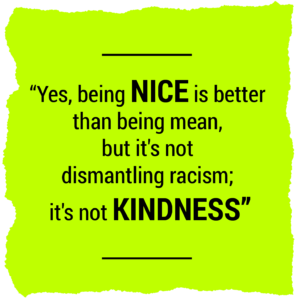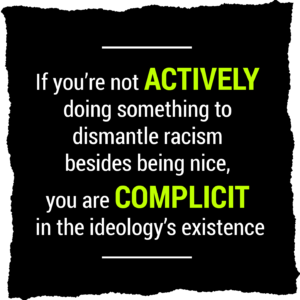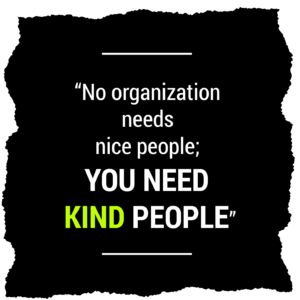Why does niceness fall short when it comes to dismantling racism in the workplace?
 This is one of the many insightful and refreshingly unapologetic topics covered in The Anti-Racist Organization by Shereen Daniels.
This is one of the many insightful and refreshingly unapologetic topics covered in The Anti-Racist Organization by Shereen Daniels.
From team diversification and the implications of the hidden job market to challenging white fragility and getting comfortable with discomfort, this book gave me a lot to unpack and reflect on. It’s emotive yet highly practical, calling out the strategies that do not work while inviting in the ones that do – I highly recommend you get yourself a copy!
Kind of nice or nice and kind?
Niceness, according to Shereen, is performative. It’s often used as an excuse, a reason to not call people out on their behaviour because they’re nice. Kindness on the other hand is active, conscious and deliberate, it’s about holding yourself and others accountable, showing compassion and taking action.
“Yes, being nice is better than being mean, but it’s not dismantling racism; it’s not kindness, which is a form of compassion and will lead to creating action to support Black colleagues […] Niceness is the deflection ‘Oh, I didn’t mean it’ reaction to a microaggression rather than kindness, which sees the pain caused to others, the ‘I’m sorry, I will do better and here’s how’ response.”
While space, time and permission are needed to make mistakes, this assertion shows that it’s what we do with those mistakes, what we learn from them, and what we commit to doing differently next time that makes the most difference.
Recognising when we’ve caused offence and reacting from a place of respect and empathy is a highly valuable part of being a good leader, a good colleague and creating a positive work culture. This is true in any context or situation but is especially vital when it comes to promoting anti-racism.
Anti-racism, after all, means it’s no longer enough to simply be not racist, just like it’s no longer enough to simply be nice.
“Systematic racism is the foundation on which our society is built […] if you’re not actively doing something to dismantle racism besides being nice, you are complicit in the ideology’s existence.”
The frankness of this statement will be a hard-hitting home truth for many, but that’s okay. Getting comfortable with discomfort is absolutely necessary if we’re going to have the open, honest and productive conversations needed to create and sustain anti-racist organisations.
But what does ‘actively doing something’ look like? When, where and how do I speak up? What does good allyship really look like?
White leaders are likely to shy away from these kinds of questions and conversations, but Shereen’s book is packed with helpful guidance…

-
Be prepared –
Prepare some things to say in case an incident happens; for example, a Black colleague is talked over, and their contributions keep getting missed. Think about how you would interrupt that meeting to ensure credit is given where credit is due.
-
In the moment –
Address the issue in the moment by starting a conversation with ‘just before I comment can I clarify what you meant?’ or ‘I don’t know if you meant offence, but actually some of the things you said are really questionable.’
-
Focusing on intent –
There’s often too much bias towards intent with dismissive comments like ‘they didn’t mean it like that, they’re nice’. While this may be true, a greater focus on impact is needed. Just because the person meant no harm, doesn’t mean they shouldn’t be held accountable.
-
Defensiveness –
Not every colleague will have a growth mindset when they’re challenged about their behaviour. If someone is defensive, try to be patient – give them time to respond and a chance to apologise to the person who was adversely impacted.

-
The flipside –
If you intervene, ensure you’re not speaking over or on behalf of your Black colleagues. Give them the option to join the conversation and if their body language implies they don’t want to, then read and respect their choice.
These acts of active kindness aren’t about seeking external validation or recognition for your allyship. One of my key takeaways from this section of Shereen’s book is that putting the preferences of your Black colleagues at the centre of the choices you make and actions you take, is what distinguishes active kindness from passive niceness when it comes to dismantling racism in the workplace.
“No organization needs nice people; you need kind people.”
By Lauren Castle
















